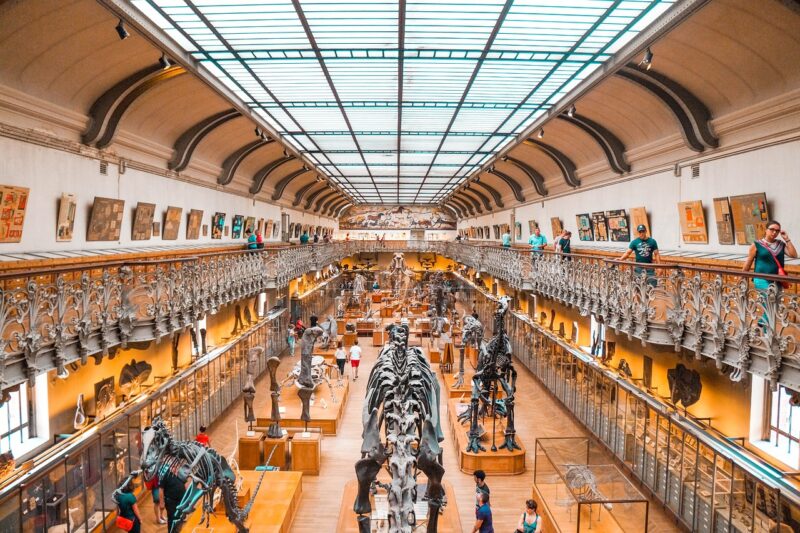The Evolution of Tools: From Simple Stones to Advanced Robotics
November 12, 2024

The journey of human civilization is deeply intertwined with the evolution of tools. From the moment our ancestors picked up the first simple stones to crack open nuts or scrap flesh, to the advanced robotics we see in factories and homes today, the development of tools has transformed not only our daily lives but also the very fabric of society itself.
1. The Dawn of Tool Use
Archaeological evidence suggests that the use of tools by our ancestors dates back to over 2.5 million years ago. The earliest known tools are classified as Oldowan tools, primarily made from stones. These rudimentary implements included simple hammerstones, chisels, and flakes, enabling early humans to hunt, forage, and process food more efficiently.
One significant aspect of this era was the shift in human diet, with the use of tools facilitating the consumption of meat. This dietary change may have led to increased brain size and cognitive function, playing a critical role in human evolution. Different regions fostered distinct tool-making traditions, which highlighted the adaptability of early humans to varied environments.
2. The Neolithic Revolution: The Birth of Agriculture and Advanced Tools
Around 10,000 BCE, the transition from nomadic lifestyles to settled agricultural communities marked a significant shift in human history. The Neolithic Revolution saw the advent of farming, necessitating more specialized tools.
- Sickles: Used for harvesting grains, sickles were crafted with sharper blades, enabling more efficient crop collection.
- Plows: The invention of the plow revolutionized agriculture, allowing for deeper soil cultivation and improved crop yields.
- Pottery and Storage Tools: With the surplus food production, the need for storage led to the creation of pottery, further enhancing food preservation.
These innovations allowed early communities to thrive, enabling population growth and the establishment of more complex societies. The evolution of tools from basic stone implements to specialized agricultural tools set the foundation for civilization.
3. The Age of Metals: From Bronze to Iron
As humanity progressed, the discovery and utilization of metals dramatically transformed tool-making. The Bronze Age, starting around 3300 BCE, heralded a new era of metal tools that offered superior strength and durability.
- Bronze Tools: Made from a mixture of copper and tin, bronze tools outlasted stone implements and allowed for the crafting of more efficient farming and combat tools.
- Iron Tools: The Iron Age, beginning around 1200 BCE, saw the rise of iron as a primary material for tool-making. Its abundance and strength allowed for tools that were cheaper and more effective.
These changes had far-reaching consequences, including advancements in warfare, construction, and even everyday life, leading to the development of more organized societies and larger political entities.
4. The Industrial Revolution: Mechanization and Mass Production
The 18th century brought the Industrial Revolution, changing how tools were made and used. Mechanization took over manual labor, and factory systems emerged. Tools became much more sophisticated and were often powered by steam and later electricity.
- Machine Tools: The advent of machine tools like lathes and milling machines revolutionized production methods, allowing for higher precision and uniformity in manufactured goods.
- Automated Production Systems: The development of assembly lines led to mass production, drastically reducing the time it took to manufacture goods.
This period not only enhanced productivity but also led to urbanization, as people moved to cities to work in factories, fundamentally altering societal structures.
5. The Rise of Digital Tools and Robotics
The late 20th century ushered in the digital era, leading to innovations in computing technology. Tools evolved from mechanical devices to digital interfaces, offering new possibilities for efficiency, communication, and creativity.
- Computers and Software: The introduction of personal computers and software applications revolutionized how we approach problem-solving, design, and data management.
- Robotics: Robotics has significantly changed industries, allowing for automation in manufacturing, healthcare, and logistics. Advanced robotics combines AI with sophisticated sensors and actuators to perform tasks once thought only possible for humans.
Today, robots can perform complex surgeries, assemble intricate electronics, and even explore distant planets, highlighting how far we have come from simple stone tools.
6. The Future of Tools: Smart Technology and Beyond
Looking ahead, the future of tools will likely be dominated by smart technology. Devices will become increasingly interconnected, utilizing the internet of things (IoT) to enhance user experience and efficiency.
Imagine tools that can analyze data in real-time and adapt to changing conditions, whether in your home, workplace, or while on the go. Smart home devices, wearable tech, and autonomous systems are just the beginning of what the future holds.
As we integrate AI and machine learning, tools will not only assist in decision-making but also predict needs and streamline tasks in unprecedented ways. The potential for innovation seems limitless as we continue to push the boundaries of technology.
Conclusion
The evolution of tools paints a vivid picture of human ingenuity and adaptation. From simple stones used by our ancestors to the advanced robotics shaping our modern world, each stage reflects societal needs, technological advances, and an ever-growing complexity in our interactions with the environment. As we move further into the future, one thing is clear: the quest for better tools will continue to be a defining characteristic of human progress.








